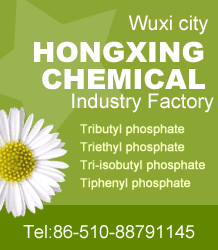Formic acid
Inquiry
| Post Date: | Apr 19,2024 |
| Expiry Date: | Oct 16,2024 |
| Detailed Description: |
Cas No. :64-18-6
1, physical and chemical properties Molecular formula: CH2O2 Color odor state: colorless transparent liquid with pungent odor. The content of formic acid is also: 90%, 94%, 99% 2, various numbers: CAS: 64-18-6 HS: 2915110000 EINECS: 200-001-8 3. Uses : Formic acid is one of the basic organic chemical raw materials, widely used in pesticides, leather, dyes, medicine and rubber industries. Formic acid can be directly used in fabric processing, tanning, textile printing and silage storage, as well as metal surface treatment agents, rubber additives and industrial solvents. Used in the synthesis of various formic acid esters, acridine dyes and formamide series pharmaceutical intermediates in organic synthesis. The specific classification is as follows: 4, production preparation methods, processes: methanol carbonyl synthesis (methyl formate), methanol, carbon monoxide hydrolysis synthesis 5. Hazard Category: Class 8.1 Acid Corrosives 6, fire-fighting measures: fire extinguishing agent: anti-solvent foam, dry powder, carbon dioxide. Fire-fighting precautions: Firefighters should wear full-body protective clothing and wear an oxygen breathing apparatus to extinguish the fire. Keep the fire container cool with water and spray it to protect the person who is leaking 7. First-aid treatment: Inhalation: quickly leave the scene to fresh air. Keep the airway open. If breathing is difficult, give oxygen. If breathing stops, take artificial respiration immediately and seek medical attention. Ingestion: Rinse mouth with water and give milk or egg white. Seek medical attention. Skin contact: Immediately remove contaminated clothing and rinse with plenty of running water for at least 15 minutes. Eye contact: Immediately lift eyelids and rinse thoroughly with plenty of running water or saline for at least 15 minutes. 8. Packing, storage and transportation: Packed in plastic drums, 240-250 kg/barrel, stored in a cool, ventilated warehouse. Keep away from fire and heat. The reservoir temperature does not exceed 30 °C and the relative humidity does not exceed 85%. Keep the container sealed. It should be stored separately from oxidants, alkalis and active metal powders, avoid mixing. Equipped with the appropriate variety and quantity of fire equipment. The storage area should be equipped with leakage emergency treatment equipment and suitable containment materials. 9. State Control and Licensing: None Remarks: |
| CAS Registry Number: | 64-18-6 |
| Synonyms: | ;FormicacidAmeisensure;Acide formique;Acido formico;Ameisensaeure;Bilorin;Collo-bueglatt;Formira;Formisoton;Hydrogen carboxylic acid;Kwas metaniowy;Kyselina mravenci;Mierenzuur;Myrmicyl;methanoic acid;Formic acids; |
| Molecular Formula: | CH2O2 |
| Molecular Weight: | 46.02 |
| Molecular Structure: | 
|
| Hazard Symbols: |  C:Corrosive; C:Corrosive; |
| Risk Codes: | R35:; |
| Safety Description: | S23:; S26:; S45:; |
| Company: | Dongying City Longxing Chemical Co., Ltd. [ China ] |
| Contact: | |
| Tel: | +86-546-6878189 Fye Sun:+86-1 |
| Fax: | +86-546-6896098 |
| Email: | fye@chemlongxing.com |
-
Disclaimer statement:The information and data included above have been realized by the enterprises and compiled by the staff, and are subject to change without notice to you. The Chemnet makes no warranties or representations whatsoever regarding the facticity, accuracy and validity of such information and data. In order to ensure your interest, we suggest you chose the products posted by our gold suppliers or VIP members.

-
- Sodium hydroxide
- 1,2-Propanediol
- Acetic acid
- N,N-Dimethylformamide
- Magnesium sulfate anhydrou...
- Sulfamic acid
- Perchlorethylene
- Trichloroethylene
- Thionyl chloride
- Sorbitol
- Citric acid
- Glycerin
- Sodium methoxide
- Solid sodium tert-butoxide
- Cyclohexanone
- Isopropanol
- Ethanol
- Isopropyl Alcohol
- Ligroin
- Phthalic anhydride
- Phthalic anhydride
- n-Butyl acetate
- N,N-Dimethylacetamide
- Maleic anhydride
- Phosphorus oxychloride

